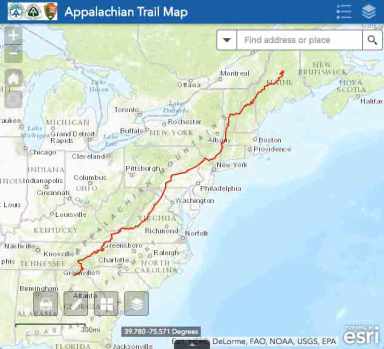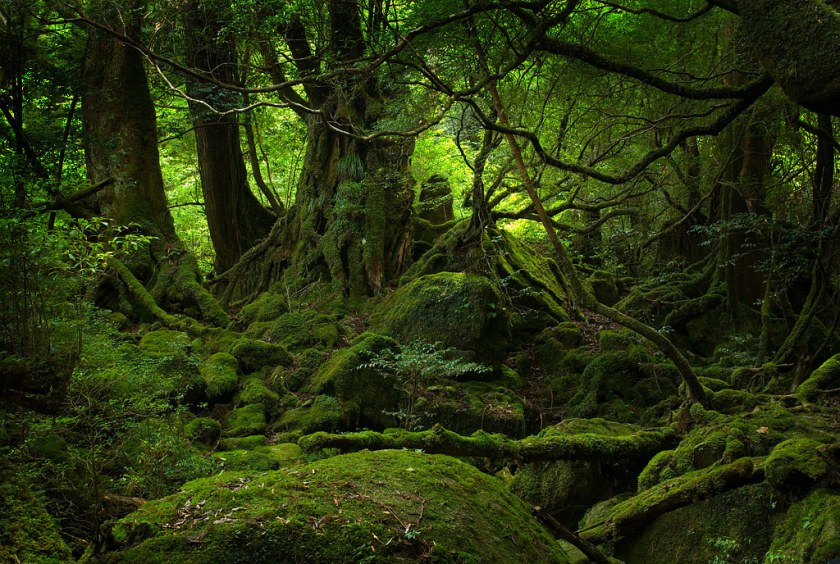 A Walk in the Woods written by Bill Bryson
A Walk in the Woods written by Bill Bryson
Here is a little summary on the first half of the book; A Walk in the Woods written by Bill Bryson. The book starts with Bill calling up his friends to hike the Appalachian Trail. Out of his friends, the only one who was willing to hike the trail with him was Stephen Katz. They hike the Appalachian Trail and meet a couple people along their way like Mary Ellen, Jim and Heath who helped them get through the snow and at one part they even encounter a bear. They are archetypes and symbols placed throughout the book giving hidden meanings to the story.
 Steps for The Archetypal Journey
Steps for The Archetypal Journey
 Map of the Appalachian Trail
Map of the Appalachian Trail
In the book, you will notice that it follows the fundamental plot archetype of the Journey. It all start’s off with the call, which is the first step of every journey. He noticed that the forest in the Appalachian Trail was in danger, Bill mention’s that “if the global temperature rises by 4 Degrees Celsius over the next fifty years…the whole of Appalachian wilderness below New England could become savanna” (Bryson 2). He also talks about how the trees in the trail are dying at a fast rate and that “if ever there was a time to experience this singular wilderness, it was now” (Bryson). Next on the Journey is the threshold they must cross. In this case, the threshold is them getting off the plane and starting the Appalachian Trail at Mount Oglethorpe. In their hike, they must overcome many obstacles to continue their Journey. The first Obstacle is Katz being out of shape, he is always way behind Bill. At one point Katz throws away everything he has that is heavy, making them in the next morning filter their coffee with toilet paper. Another conflict is how much they argue while their hiking. This made it a lot easier for them to just quit, but Bill finds out how important his friendship is to Katz and doesn’t go as hard on him, making it easier for them to get along. After being in the forests for a long time, they end up going to a town called Gatlinburg to get supplies. While being in the town they realize how noise and fast paced everything is. After that Bill realizes that people enjoy going for hikes because peace and quiet it offers. I feel like this is a big transformation for Bill as at the start of the Appalachian Trail he doesn’t seem to enjoy it and is just trying to finish it, but once he realizes he can’t finish the trail, Bill say’s ‘If we couldn’t walk the whole trail, we also didn’t have to, which was a novel thought that grew more attractive the more we considered it… We could enjoy ourselves” (Bryson 111). Bill’s main journey is not the typical archetypal hero’s journey. Bill does not end up finishing the Appalachian Trail. He goes through all the steps that a Journey does, but he fails to accomplish his end goal of the journey and that is to finish the Appalachian Trail.
Hero Vs. ProtagonistBill never seems to display any signs of being a hero, he is mostly a protagonist. Now you’re probably thinking that those are the same thing, well they are not. According to Vocabulary.com “A hero is someone who does fantastic things that people love”. Now in the book, Bill doesn’t do anything miraculous neither do people necessarily love him. The story is just in his point of view which is the reason why he is the protagonists or you could say the main character. The difference between the two can be found in their Greek roots, “the word hero meant “demigod” and a protagonist meant the first person to address the chorus in a Greek drama, also known as the main character” (Vocabulary.com).
The Jester
There are not many people in the book that match archetypal characters because most of the book only covers two people. The one person though that I think fits the archetypal character of the jester is Katz. I think this because he creates all the humor in the book and is always wasting time.
 The Forest
The Forest
The Forest
The Forest
The forest is a symbol used in the book. A Forest is often used to symbolize something is dark and menacing. It was also perceived that there is danger in the forest and that there are strange people who live in it (Clark, “Symbolism of Forest and Trees”). Here is an example of where the symbol was used, “bit hard into a flinching limb and dragged him shouting and flailing through the camp and into the woods” (Bryson 13). This shows you what Kratz and Bill were thinking what the woods would be before taking on the Appalachian Trail.
Work Cited
“A Walk in the Woods Summary & Study Guide.” BookRags. BookRags, n.d. Web. 13 July 2017.
Clark, Rosalee. “Symbolism of Forest and Trees.” Rosalee Clark. N.p., n.d. Web. 13 July 2017.
“The Trail Is Waiting.” Appalachian Trail Conservancy. N.p., n.d. Web. 13 July 2017.
Thinkmap, Inc. “Hero vs. protagonist on Vocabulary.com.” Vocabulary.com. N.p., n.d.Web. 13 July 2017.
Advertisements Share this:




